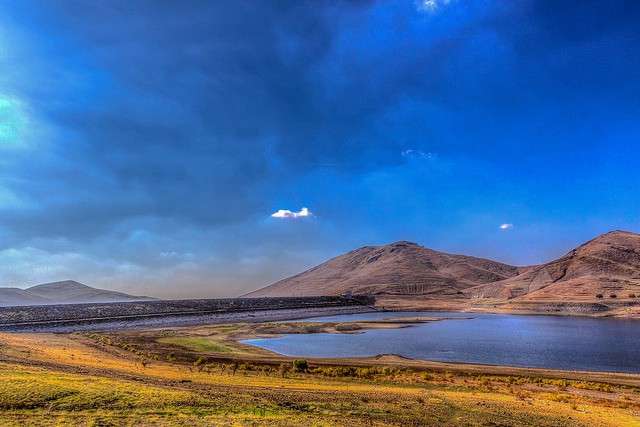It never rains but it pours鈥攃limate change and drought

Droughts have been getting a lot of press lately. From affects on agriculture in California to the water rationing in Puerto Rico, and a near miss on rice paddy losses in North Korea; droughts are affecting ecosystems around the globe. And then come the floods. Mudslides, eroded banks and a photo on the evening news of a man in a canoe floating down his driveway.
Sure, we've always had droughts; we've always had floods. The difference now is the frequency and severity. Several rounds of climate model predictions have all agreed on a future with a higher frequency of heavy precipitation and drought compared to recent history for many parts of the planet (e.g. ).
What will this mean for plants, animals and people? What are the implications for primary productivity, plant growth and adaptation? And how should the known plasticity of plants be accounted for when projecting plant response to future (potentially novel) climates? Researchers from disparate fields are attempting to find out.
Two recent papers dealing with these questions are included in the PLOS , updated for #ESA100. In ","Yang et al. examine the contributions of human and climate pressures to recent severe spring droughts in Yunnan, China. The authors attribute the droughts to a combination of changes in climate and human-induced changes on the land. Increasing temperature and declining precipitation are leading to moisture deficits in the region. At the same time, changes in anthropogenic land use practices, such as clearing for agriculture and massive afforestation efforts increased evapotranspiration from the landscape, exacerbating drought.
Taking a larger, global perspective to tackle a smaller scale question, Daryanto et al. conducted a meta-analysis of the effects of drought on the production of legume crops in "" They found that the impact of water-stress on plant fruit production varied by species, and highlighted several species that appear to be more robust to drought. These species could be targets for future agricultural research on climate-adapted crops. Studies such as these could also highlight species for future research on crop plasticity and adaptation to changes in growing conditions. Such studies will become increasingly important as shifts in climate niches could potentially force species into novel climate regimes.
Climate change and plant productivity
Another recent paper in PLOS Biology by Mora et al. ("") has suggested that these novel climates may end up reducing plant productivity in the future, despite increasing trends in CO2. Mora and colleagues paint a bleak picture for plant production in the absence of significant reduction in emissions, due to a resulting decline in appropriate growing days in many parts of the world.
However, the authors also assume no plasticity in plant responses to climate shifts outside the currently experienced averages, despite ample evidence of the ability of plants to exist outside their historical ranges. Additional evidence is needed on the responses of individual plants species as well as communities, to novel climate regimes, as well as the mechanisms behind those responses, and the consequences for variation in adaptability across species and functional groups.
Journal information: PLoS ONE , PLoS Biology
Provided by Public Library of Science
This story is republished courtesy of PLOS Blogs: .




















